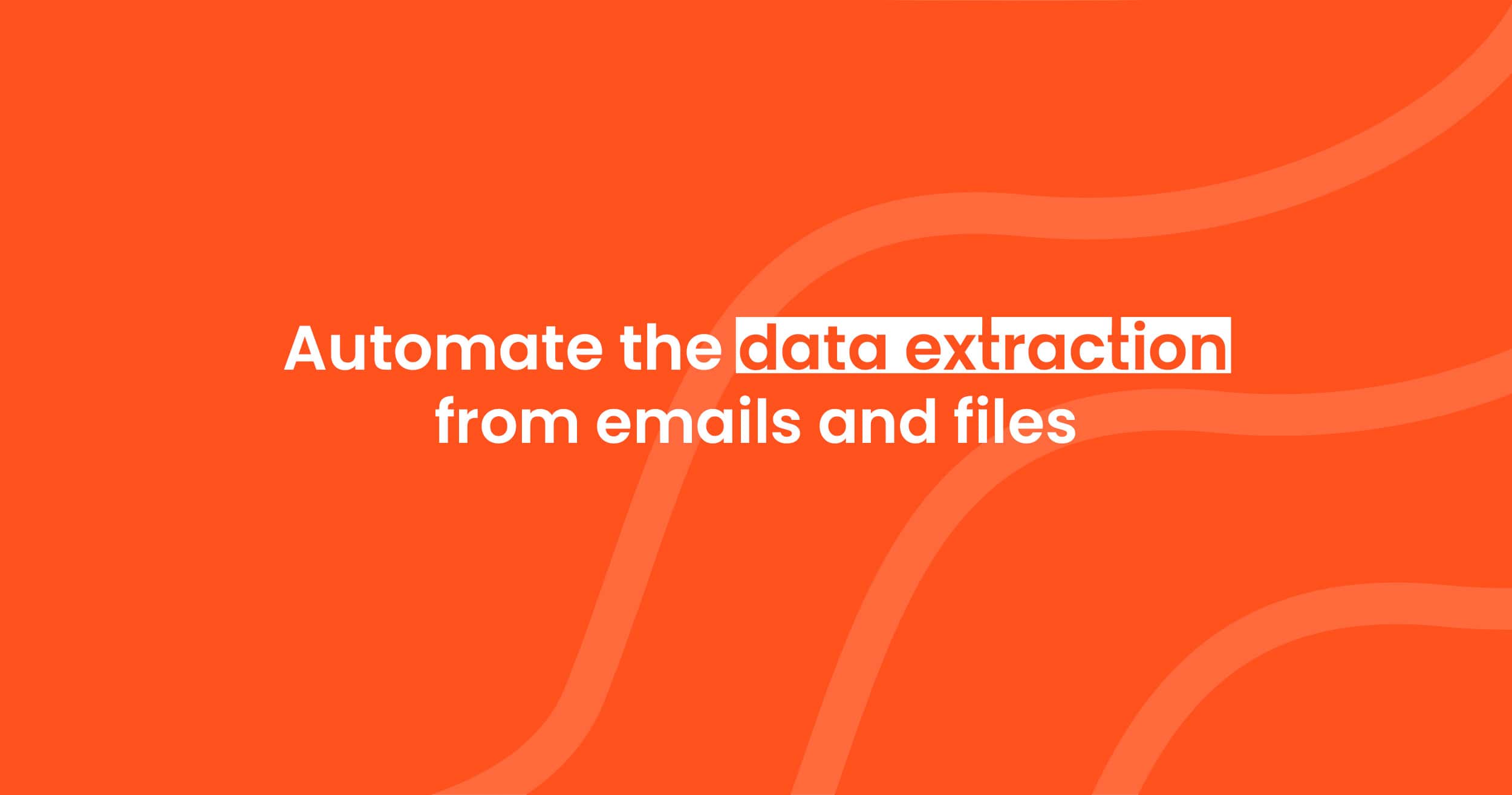When to Use Rule-Based Parsing: 5 Real-World Examples (and When Not To)
Not every document needs AI. In many cases, simple rule-based parsing is the fastest and most reliable way to extract structured data. This article shows you where it shines—and where it doesn't.

1. Introduction
Rule-based parsing is one of the most straightforward and efficient ways to extract data from documents and emails. It doesn’t rely on AI, OCR, or training. Instead, it works with patterns and anchors—like finding a word after a colon, or extracting the second line after a label.
While tools like GPT and OCR get all the attention today, rule-based parsers are still widely used. In fact, for many high-volume business use cases, rule-based parsing is faster, cheaper, and more stable than AI.
But it’s not for every scenario. If your documents have complex layouts, inconsistent formats, or vague context, rule-based logic may not be enough.
This article will help you decide when rule-based parsing is a good fit. We’ll walk through five real-world examples where it works perfectly—and a few cases where it doesn’t. If you’ve ever asked, “Can I automate this with simple rules?”, this guide is for you.
You may also want to read:
👉 PDF Parsing Methods Compared
👉 Alternative to Mailparser
2. What Is Rule-Based Parsing? (Quick Recap)
Rule-based parsing uses predefined instructions (rules) to locate and extract data from documents. These rules often rely on:
- Anchors: known text like “Order ID:” or “Customer Name”
- Delimiters: symbols like colons, semicolons, or line breaks
- Patterns: such as “number after ‘Invoice #’” or “value in the second column”
Parsio offers 4 different parser types, including a powerful rule-based parser for structured layouts like emails or simple PDFs.
But instead of asking users to create complex rules like:
- “Extract the value after ‘Total’”
- “Get the second line of a shipping address”
- “Capture a table starting after ‘Item List’”
Parsio simplifies the process. You just highlight the data you want in the document. Parsio automatically detects the pattern and builds a reusable parsing template—no code, no manual rule-writing required.

Rule-based parsing works best for:
- Documents with a consistent layout
- Machine-generated emails
- Forms with labeled fields
It’s fast, easy to debug, and transparent. But it breaks when structure changes or text is ambiguous.
3. Example 1: Parsing Shipping Confirmation Emails
Use case
Imagine you run an e-commerce business or a logistics team. You get dozens (or hundreds) of emails every week from shipping providers like UPS, FedEx, or Shopify. Each email contains useful details like:
- Tracking number
- Estimated delivery date
- Shipping carrier
- Order reference
You want to extract these fields and automatically:
- Store them in a spreadsheet
- Update a delivery dashboard
- Notify customers about delays
Why rule-based works here
Shipping confirmation emails are usually system-generated. That means the structure and wording are consistent.
For example, the email might contain:
Order #1293021
Tracking number: 1Z38492X8283822
Estimated delivery: July 14, 2025
Shipped via: UPS GroundWith rule-based logic, you can easily extract these fields:
- Anchor:
Tracking number:→ Value: 1Z38492X8283822 - Anchor:
Estimated delivery:→ Value: July 14, 2025
These rules will work reliably unless the format changes significantly.
Real-world benefit
You don’t need to train a model or deal with AI hallucinations. The logic is simple and fast. You can then send parsed data to Google Sheets, Airtable, Slack, or your CRM using tools like Zapier or Make.
4. Example 2: Parsing Fixed-Format Lead Forms
Use case
You receive sales leads via form submissions from services like Jotform, Typeform, or internal systems. These forms are sent by email or saved as PDFs. Each one contains fields like:
Name: Alice Martin
Email: [email protected]
Company: Bright Tools
Budget: $10,000
Notes: Interested in product demo next week.You want to extract this data automatically and:
- Create a new lead in your CRM
- Send it to your sales team via Slack
- Log it in a database for reporting
Why rule-based works here
This is a perfect case for rule-based parsing:
- The layout is identical in every form
- Field names (Name, Email, Budget) are present
- Each value follows a colon or appears on a fixed line
You can set up rules like:
- Get value after
Name: - Get value after
Budget: - Get line after
Notes:(if it's multiline)
No AI needed. The structure is clear and repeatable.
Real-world benefit
Lead forms are often high-volume, and every second counts. Rule-based parsing ensures near-instant extraction. No training, no delay. You can even add conditional filters (e.g., “only process leads with Budget > $5,000”).
5. Example 3: Parsing ADF XML Car Dealer Leads
Use case
Car dealerships often receive lead information in ADF XML format—a standardized structure used across many lead generation platforms. A sample snippet looks like this:
<adf>
<prospect>
<customer>
<contact>
<name part="full">John Doe</name>
<email>[email protected]</email>
</contact>
</customer>
<vehicle>
<year>2023</year>
<make>Honda</make>
<model>Civic</model>
</vehicle>
</prospect>
</adf>
You want to extract fields like:
- Full name
- Car make/model/year
- Inquiry date
Why rule-based works here
ADF XML emails are machine-generated and follow a strict format. Even though the file is XML (not plain text), you can treat it like structured content using anchors and predictable tag labels.
Example rule:
- Extract value between
<email>and</email>

Some tools like Parsio offer XML-specific parsing or allow anchor rules based on tag structure.
Real-world benefit
Instead of writing custom scripts or setting up an AI model, rule-based logic gets the job done in minutes. It’s perfect when every lead follows the same tag structure.
🔗 Learn how to parse ADF XML with Parsio
6. Example 4: Parsing Support Tickets with Repeated Labels
Use case
Your team receives automated email alerts or PDF reports with technical support tickets. Each one follows a structure like:
Ticket ID: 38472
User: Emily Zhao
Category: Login Error
Priority: High
Message: The user is unable to log in after password reset.You want to:
- Automatically categorize tickets
- Add them to your helpdesk or Airtable
- Set up alerts based on keywords in the message
Why rule-based works here
Again, this is a highly structured format. Each field follows a “Label: Value” structure on its own line. This is ideal for rule-based logic:
- Anchor:
Category:→ Get text after colon - Anchor:
Message:→ Get next line or paragraph
Even if the message content changes, the label formatting stays the same.
Real-world benefit
No need for AI classification or natural language understanding here. Rule-based parsing is reliable, quick, and accurate for system-generated tickets.
Bonus: You can set conditional rules to alert you when Priority = High or Category = Payment.
7. Example 5: Parsing Newsletter Metadata
Use case
Let’s say your marketing team uses tools like Substack, Mailchimp, or ConvertKit. These services send you email reports for each newsletter blast. Inside the message, you’ll often see something like:
Campaign: July Update
Send date: July 1, 2025
Recipients: 2,500
Open rate: 42.1%
Click rate: 8.7%You want to extract and track:
- Campaign title
- Send date
- Open and click rates
Why rule-based works here
These reports follow a consistent layout. The labels are always the same and clearly marked. That makes this format perfect for anchor-based rules:
- Anchor:
Open rate:→ Extract percent value - Anchor:
Send date:→ Extract following date
Even if the campaign name changes, the structure of the email doesn’t.
Real-world benefit
With a simple parser, you can:
- Automatically update dashboards
- Track campaign performance over time
- Avoid copy-pasting every week
No AI needed. Just rules.
8. When Rule-Based Parsing Fails
Rule-based parsing is powerful—but only when the structure of your data is stable and predictable.

Here are a few scenarios where it doesn’t work well:
a. Layouts change frequently
If the anchor labels vary or appear in different positions across documents (e.g. “Order #”, “Order Number”, or “Reference”), your rules may break. AI is more flexible in recognizing variations.
b. Free-form content
If you’re dealing with emails or PDFs written in natural language (like resumes, legal contracts, or support emails), rule-based logic may not extract what you need.
Example:
“Hi, I’d like to return the shoes I bought last Thursday. The order number is somewhere in the email.”
You’d need an LLM to understand that context.
c. Tables with inconsistent structure
When parsing line items, receipts, or financial statements, the layout may vary in column headers, spacing, or merged cells. Rule-based tools can’t adapt easily. For these cases, AI-powered PDF parsers or vision-based models are better options.
🔗 Learn more: PDF Parsing Methods Compared
9. Checklist: Should You Use Rule-Based Parsing?
Here’s a quick yes/no checklist to help you decide:
| Question | If Yes → Use Rule-Based? |
|---|---|
| Is the layout consistent? | ✅ Yes |
| Are field labels clearly marked (e.g. “Total:”) | ✅ Yes |
| Do the same anchors appear every time? | ✅ Yes |
| Is the document machine-generated? | ✅ Yes |
| Does the document contain free-form language? | ❌ No |
| Do fields appear in different positions each time? | ❌ No |
| Do you need to extract context (not just text)? | ❌ No |
| Is there tabular data with inconsistent rows? | ❌ No |
If you answered mostly Yes, rule-based parsing is a great fit.
If mostly No, consider using an AI-powered parser or LLM engine.
10. Conclusion: Keep It Simple When You Can
Rule-based parsing isn’t outdated—it’s practical.
It can handle a large share of real-world use cases with zero training, low cost, and full control.
At Parsio, we support rule-based, Zonal OCR, AI, and LLM-based extraction methods. You can start simple with rules—and scale to smarter tools when needed.
For many teams, a hybrid approach works best:
Use rules for emails and consistent PDFs, and AI or LLMs for the rest.
📌 Try it yourself: Start parsing structured data with Parsio for free
📘 You might also like:
- How to Convert PDFs to JSON with AI
- Extracting Data From PDFs Using Claude 3, Donut, and Nougat
- How to Automate Invoice Data Extraction

